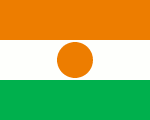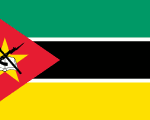Namibia is a country of great diversity, with people from a variety of ethnic groups and cultures. The largest ethnic group is the Ovambo, followed by the Damara/Nama, Kavango, and Herero. Namibia is also home to a small but significant white minority.
The Namibian people are generally friendly and welcoming. They are also known for their strong sense of community and their commitment to traditional values.
Economy
Namibia is a developing country with a mixed economy. The main sectors of the economy are mining, agriculture, tourism, and fishing. Namibia is rich in mineral resources, including diamonds, gold, uranium, and copper.
The Namibian economy has grown steadily in recent years, but poverty and inequality remain major challenges.
Culture
Namibian culture is a blend of African and European influences. The traditional cultures of the different ethnic groups are still very much alive, and they play an important role in Namibian society.
Namibian art and music are particularly rich and diverse. The country is also home to a number of important historical and cultural sites, including the Twyfelfontein rock engravings and the Fish River Canyon.
Marriage
Traditional Namibian marriages are arranged by the families of the bride and groom. The bride’s family receives a dowry from the groom’s family in exchange for her hand in marriage.
Traditional Namibian marriages are often polygamous, with a man having multiple wives. However, polygamy is becoming less common in modern Namibia.
Food
Namibian cuisine is influenced by the country’s many different cultures. Some popular Namibian dishes include:
- Kapana: Grilled beef or chicken skewers
- Oshiwambo: A porridge made from maize flour
- Mopane worms: Dried caterpillars that are considered a delicacy
- Potjiekos: A stew cooked in a three-legged pot over an open fire
Dance
Namibian dance is a vibrant and expressive art form. Some popular Namibian dances include:
- Oviritje: A traditional Ovambo dance that is performed by women
- Otjiherero: A traditional Herero dance that is performed by men
- Gumboot: A dance that originated in South African mines and is now popular throughout Namibia
Tourism
Namibia is a popular tourist destination, known for its stunning scenery, diverse wildlife, and rich culture. Some of the most popular tourist attractions in Namibia include:
- Etosha National Park: One of the largest game reserves in Africa, home to a variety of wildlife including lions, elephants, rhinos, and cheetahs
- Sossusvlei: A salt pan in the Namib Desert surrounded by towering sand dunes
- Swakopmund: A coastal town with a German colonial heritage
- Fish River Canyon: The second-largest canyon in the world
Holidays and nightlife
Some of the most important holidays in Namibia include:
- Independence Day: 21 March
- Workers’ Day: 1 May
- Heroes’ Day: 26 August
- Christmas Day: 25 December
Namibia’s nightlife is fairly subdued, but there are a number of bars and clubs in Windhoek and other major towns. There are also a number of casinos in Namibia.
Conclusion
Namibia is a beautiful and diverse country with a lot to offer visitors. The people are friendly and welcoming, the culture is rich and vibrant, and the natural scenery is stunning. Namibia is also a relatively safe country to visit, making it a great option for travelers of all ages and interests.








